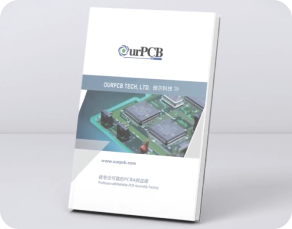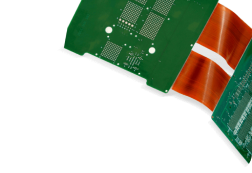Rogers PCB Manufacturer
- Professional engineer review; strict quality control for each process.
- Advanced Testing Technology To Ensure the Quality such as AOI Test, E-Test, X-RAY, Impedance Control.
- We committed to helping customers get the highest quality products and services with competitive prices (especially multilayers PCBs).
 5 Star Rating on
5 Star Rating on

- 1Order and Procurement
- 2PCB Manufacturing and Preparation
- 3Assembly and Soldering
- 4Inspection and Quality Control
- 5Finalization and Shipping
- Bare PCB in 8 working hours
- PCBA with components in 2 working days
- Bare PCB manufacturing
- Components sourcing
- PCB assembling
- Wire harness manufacturing
- Casing /Housing manufacturing
- Programming/Testing
Adrian Leitch


Andrew Durrant


Andrew Peeler


Andrew Wood


Ben Thomas


Darren Larosa


Debra Beukes


Eastern Europe Archives


frankyc


Fred Van


Greg MacDonald


John Powell


Jonathan Pippard


Jordan Thurgood


Justin Regan


Mark A


Mark Pagura


Maryanne Hassell


Matthew O'Neill


mitch clark


Oli


Peter Lambert


Sasha Marks


Slavko Mali


SPI MX


Steve Visser


Steven Munari


Steven Vatev


Tane Pendragon


Tasmiah Khan


Trevor Gardner


Free Consultation
Need Rogers PCB manufacturing?
We at OurPCB are here to assist you. Our Rogers PCB services are ideal for telecommunications, automotive, RF engineering, aeronautic engineering, and computer systems.
As a leading PCBA manufacturer with numerous satisfied customers worldwide, especially in the USA, our team of experienced professionals is dedicated to providing high-quality, reliable PCB services to meet all your electronic needs.
ROGERS PCB APPLICATIONS
Rogers 4350B
The Rogers 4350B has a low loss capability and stable control on its dielectric constant (DK), makes its materials ideal for high power RF designs and super-active appliances.
Rogers 3003
This Rogers PCB model is suitable for automotive radar applications with 77 GHz, and it also supports 5G wireless applications and ADAS.
Rogers 3006
The 3006 model offers excellent mechanical and electrical stability—with a reliable dielectric constant across various temperatures. And it removes the step change in the Dk.
Rogers 3010
The 3010 is one of the most affordable models with advanced ceramic-filled PTFE materials. Hence, its stability streamlines the broadband components.
Rogers 0588
Reinforced with glass microfibers, the Rogers 5880 has a low DK and loss feature. Hence, it makes the model highly suitable for broadband and high-frequency applications.
Rogers 6002
The 6002 model comes with low DK materials that are ideal for sophisticated microwave structures. Hence, it’s ideal for multi-layer board designs.
Rogers 6010
This RO6010 is ideal for microwave and electronic board applications that require a high DK. Also, the model is ideal—if you plan on dealing with circuit size reduction.
Rogers 4003
The Rogers 4003 model uses 1674 and 1080 glass fabric styles. All its configurations have the same specifications; they don’t support bromination.
Rogers 4835
This 4835 laminate is a low-loss material that provides high stability at significant oxidation resistance and increased temperatures. With it, you’ll get a standard glass or epoxy FR-4 processes and cheap circuit production.
Rogers 4360G2
This laminate offers a perfect balance of processing capability and performance. Plus, the low-loss laminate consists of hydrocarbon ceramic-filled thermostat materials.
Data Sheet Showing the Different Roger PCB Models (Table 1)
| Property | RO4350B | RO3003 | RO3006 | RO3010 | RO4835 | RO5880 | RO6002 | RO6010 | RO4003 | RO 4360G2 |
|---|---|---|---|---|---|---|---|---|---|---|
| Dk, Process | (2)3.48 ± 0.05 | 3.00 ± 0.04 | 6.15 ± 0.15 | 10.2 ± 0.30 | 3.48 ± 0.05 | 2.20 ± 0.02 | 2.94 ± 0.04 | 10.2 ± 0.25 | 3.38 ± 0.05 | 6.15 ± 0.15 |
| Dk Design | 3.66 | 3.00 | 6.50 | 11.20 | 3.66 | 2.20 | 2.94 | – | 3.55 | – |
| Dissipation Factor | 0.0037 0.0031 | 0.001 0 | 0.002 0 | 0.002 2 | 0.003 7 | 0.0004 0.0009 | 0.001 2 | 0.002 3 | 0.0027 0.0021 | 0.003 8 |
| Thermal Coefficient | +50 | -3 | -262 | -395 | +50 | -125 | +12 | -425 | +40 | – |
| Dimension Stability | – | -0.06 0.07 | -0.27 -0.15 | -0.35 -0.31 | – | – | – | – | – | – |
| Volume Resistivity | 1.2 X 10^10 | 10^7 | 10^5 | 10^5 | 5 x 10^8 | 2 x 10^7 | 10^6 | 5 x 10^5 | 1.7 X 10^10 | 4.0 x 10^13 |
| Surface Resistivity | 5.7 X 10^9 | 10^7 | 10^5 | 10^5 | 7 x 10^8 | 3 x 10^7 | 10^7 | 5 x 10^6 | 4.2 X 10^9 | 9.0 x 10^12 |
| Electrical Strength | 31.2 (780) | – | – | – | 30.2 (755) | 0.96 (0.23) | – | – | 31.2 (780) | 784 |
| Tensile Modulus | 16,767 (2,432) 14,153, (2,053) | 930 823 | 1498 1293 | 1902 1934 | 7780 (1128) | 1070 (156) 450 (65), 860 (125) 380 (55) | 828 (120) | 931 (135) | 19,650 (2,850) 19,450 (2,821) | – |
Table 2 (Continuation)
| Property | RO4350B | RO3003 | RO3006 | RO3010 | RO4835 | RO5880 | RO6002 | RO6010 | RO4003 | RO 4360G2 |
|---|---|---|---|---|---|---|---|---|---|---|
| Tensile Strength | 203 (29.5) 130 (18.9) | – | – | – | 136 (19.7) | – | – | 17 (2.4) | 139 (20.2) 100 (14.5) | 131 (19) 97 (14) |
| Flexural Strength | 255 (37) | – | – | – | 186 (27) | – | – | 4364 (633) | 276 (40) | 213 (31) 145 (21) |
| Dimensional Stability | <0.5 | – | – | – | <0.5 | – | – | – | <0.3 | – |
| Coefficient of Thermal Expansion | 10 12 32 | 17 16 25 | 17 17 24 | 13 11 16 | 10 12 32 | 31 48 237 | 16 16 24 | 24 24 24 | 11 14 46 | 13 14 28 |
| Tg | >280 | – | – | – | >280 | – | – | – | >280 | >280 |
| Td | 390 | 500 | 500 | 500 | 390 | 500 | 500 | 500 | 425 | 407 |
| Specific Heat | – | 0.9 | 0.86 | 0.8 | – | – | 0.93 (0.22) | 1.00 (0.239) | – | – |
| Thermal Conductivity | 0.69 | 0.50 | 0.79 | 0.95 | 0.66 | 0.22 | 0.60 | 0.78 | 0.71 | 0.75 |
| Moisture Absorption | 0.06 | 0.04 | 0.02 | 0.05 | 0.05 | 0.02 | 0.02 | 0.05 | 0.06 | 0.08 |
| Density | 1.86 | 2.1 | 2.6 | 2.8 | 1.92 | 2.2 | 2.1 | 3.1 | 1.79 | 2.16 |
| Copper Peel Strength | 0.88 (5.0) | 12.7 | 7.1 | 9.4 | 0.88 (5.0) | 31.2 (5.5) | 8.9 (1.6) | 12.3 (2.1) | 1.05 (6.0) | 5.2 (0.91) |
| Flammability | (3)V-0 | V-0 | V-0 | V-0 | V-0 | V-0 | V-0 | 94V-0 | N/A | V-0 |
| Lead-Free Process Compatible | Yes | Yes | Yes | Yes | Yes | Yes | Yes | Yes | Yes | – |
TYPES OF ROGERS PCB MATERIALS
Metal Claddings
- Rolled
- Electrodeposited
- Electrodeposited Reverse Treated
- Resistive Foil
Bonding Materials
- Ceramic PTFE Bondply
- Woven Glass
- Prepreg
- Hydrocarbon
- Thermoset Thermal and Electrically Conductive Adhesive (TECA) Film
Laminates
- Woven Glass Reinforced Modified Epoxy Laminates
- PTFE Random Glass Fiber
- Woven Glass UL 94 V-0 laminates
- Hydrocarbon
- PTFE Ceramic
- Cross-Plied Woven Glass-Reinforced PTFE
- Woven Glass Reinforced PTFE Antenna Grade Laminates
- Filled PTFE Composite
- Woven Glass Reinforced Modified Epoxy IMS
FR-4 MATERIAL VS. ROGERS MATERIAL
| Factors | FR-4 Material | Rogers Material |
|---|---|---|
| Dissipation factor (DF) | 0.020 | 0.004 |
| Price | Affordable | Expensive |
| Thermal Management | This grade material doesn’t handle high temperature well. | The Rogers material manages high temperatures perfectly. |
| Performance | Decent | Remarkable |
| Dielectric Constant (DK) | 4.5 | 6.15 to 11 |
| Impedance Stability | Lower polarity and it doesn’t stabilize charges well. | Higher polarity and stabilizes charges effectively. |
| Applications | The FR-4 isn’t so ideal for space applications because it isn’t outgassing tolerant. | Rogers is a better option for space applications because it reduces outgassing effectively. |
THE APPLICATIONS OF THE ROGERS PCB
1. Telecommunication:
Cellular Base Station Antennas, Communication systems, Direct Broadcast Satellite, Microwave Equipment, Carrier-Grade Wi-Fi/ Licensed Assisted Access, 5G Station, etc.
2. Automotive:
Automated Test Equipment (ATE), Automotive Sensors and Radar, etc.
3. RF Engineering:
Power Amplifiers, RF Identification tags, IP Infrastructure, etc.
4. Aeronautic Engineering:
Aircraft Collision Avoidance System, Microstrip Antenna, Backhaul Radios, etc.
5. Computer:
DAS, Advanced Driver Assistance Systems (ADAS), etc.
THE ADVANTAGES OF THE ROGERS PCB
- Rogers PCB has a low moisture absorption feature, low thermal expansion, and solid dimensional stability for different conditions.
- The material of the RogersPCB is compatible and it’s easy to fabricate because the PCB is as thin as 0.1mm.
- Rogers PCB has an excellent thermal management and it’s ideal for electronic devices and circuits that produce excess heat.
- With Rogers PCB, there’s the reduction of outgassing in space applications.
- The Rogers PCB matches trace locations and dimensions, leading it to enhance impedance control.
- Rogers PCB provides steady high-frequency performance.







Take a Factory Tour!
OurPCB Shijiazhuang opened in 2007. Today, this factory spans over 6,000 meters in total, is equipped with 5 SIEMENS SMT lines, and has 200 employees. 90% of the business at our factory in Shijiazhuang is for advanced PCB assembly.
We went on to build our second factory in Shenzhen in 2017. This factory is about half the size of Shijiazhuang, but it boasts 7 YAMAHA SMT lines, X-ray, and AOI. It’s dedicated to standard assembly service and employs 110 people.
In 2014, we opened OurPCB in Melbourne, Australia, to provide services to our English-speaking customers across the world.









